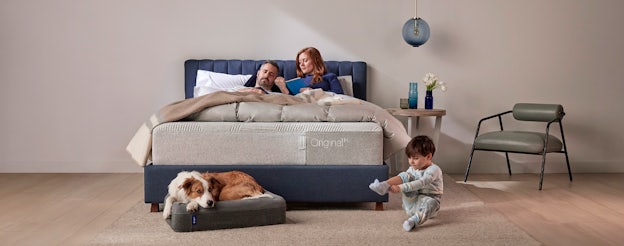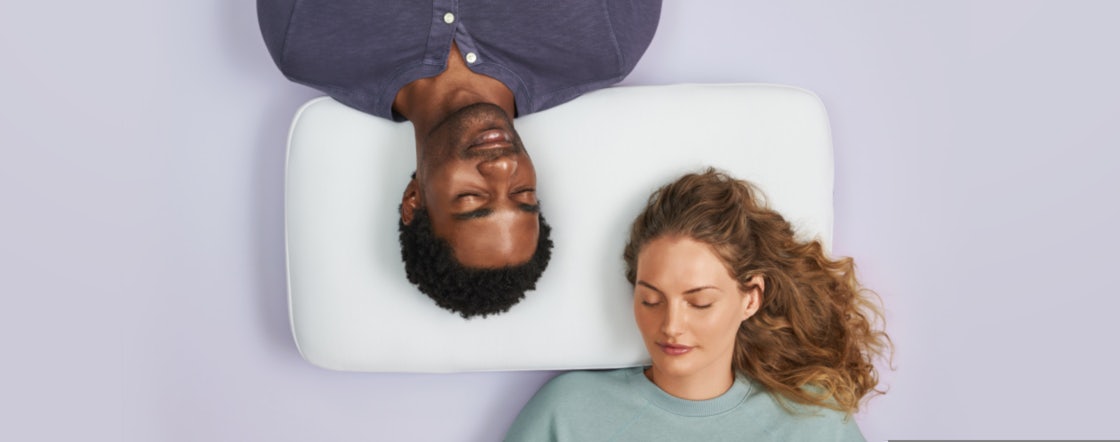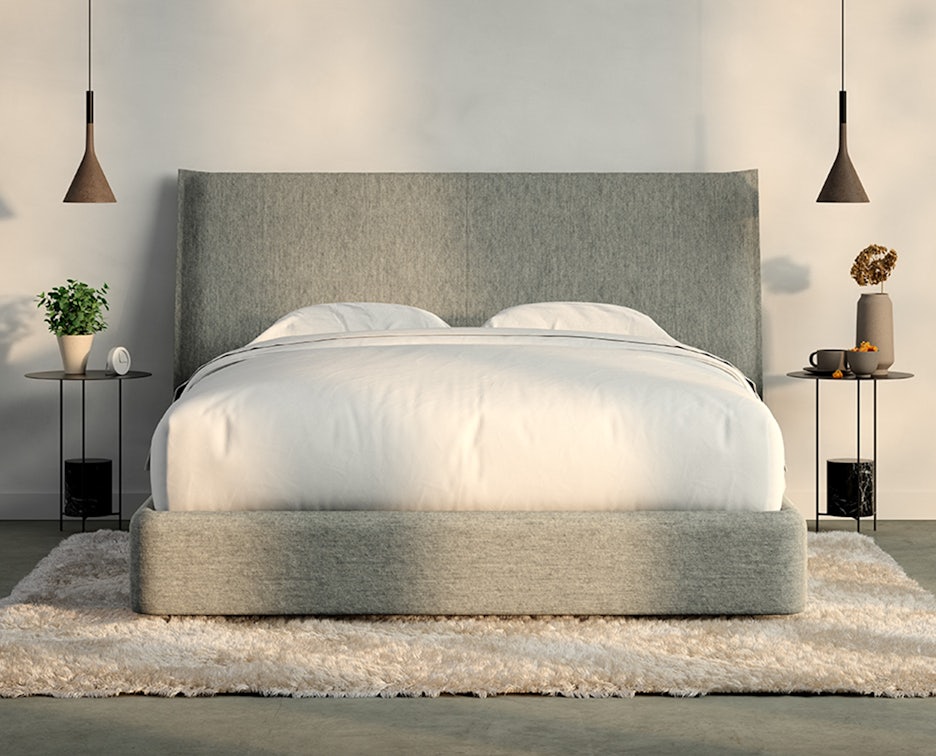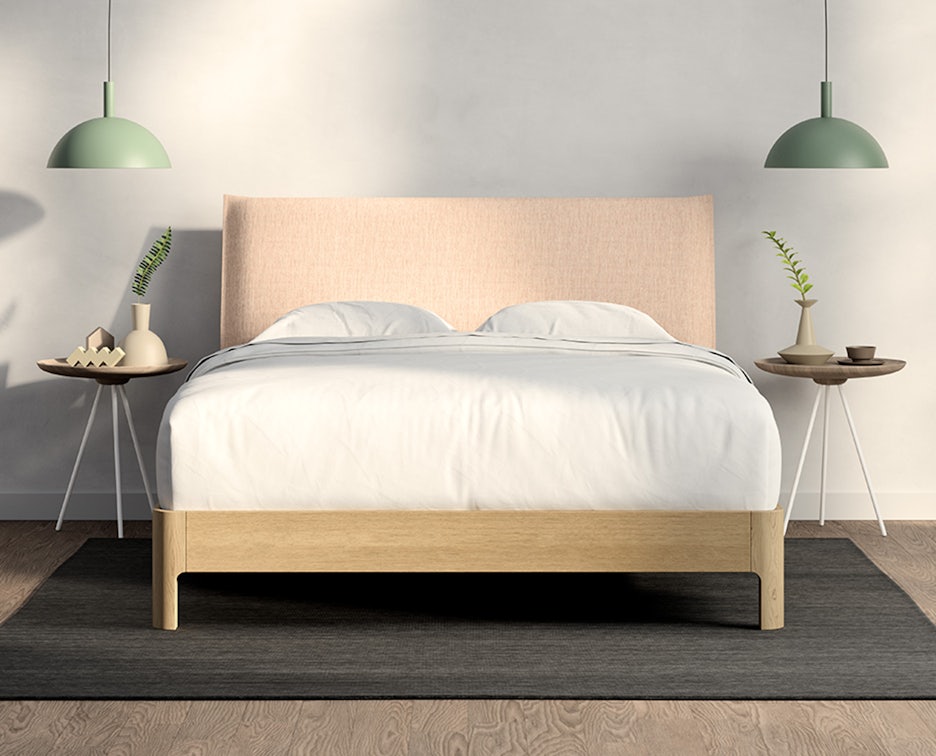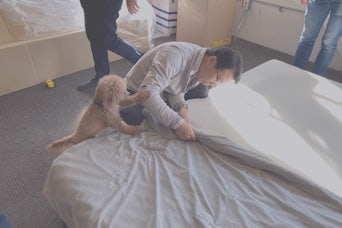
Under the Covers With
Vincent Wang, Ergonomist
8/4/2020 | Casper Labs
Having a good head on your shoulders isn’t just about being grounded and balanced. According to Vincent Wang, your physical alignment is paramount to everything, including good sleep.
We recently sat down with Vincent Wang, Casper Lab’s expert Ergonomist to discuss all things posture and sleep. Side and stomach sleepers, we’ve got news for you!
If we have you on the edge of your seat, good. But please let it only be figuratively and momentarily because Vincent would argue that sitting on the edge of your seat for too long will compromise your spinal alignment.
Ergonomics sounds complicated. What is it and how did you get into it?
With his shoulders away from his ears and his neck tucked slightly down, Vincent explains that ergonomics is, quite simply, the science of optimizing the interaction between a human being and their environment. “More specifically, it’s the science behind how design can foster a better fit between a person and their environment using nuanced tasks and tools.” The goal: to improve overall system performance and productivity while also reducing the likelihood of physical injury.
Having studied Industrial Engineering during his undergrad years, Vincent is no stranger to the intricacies of systems and operations that best optimize human performance. His original focus was on manufacturing and improving assembly line work to help people complete tasks quicker and more efficiently. “When we’re zooming in and looking at a person doing their job, the real question is: how do we optimize that process?”
Intrigued by human and environmental interactions, Vincent attended Cornell, receiving a Masters in Human Factors and Ergonomics. He’s since applied his niche knowledge to help companies improve their workplace ergonomics — be it for employees on a factory floor or behind a desk. Vincent provides the tools necessary to reduce long-term wear-and-tear injuries like neck pain, shoulder pain, and carpal tunnel syndrome.
What does an ergonomist do at Casper? How do you help people sleep better?
After 10 years working in office ergonomics, Vincent transitioned to a less conscious interaction: Yes, we’re talking about sleep.
At Casper, Vincent looks at how to develop mattresses that are not only comfortable, but also biomechanically supportive. “We are doing more than just reducing sleep-induced discomfort or injuries. We’re actively trying to provide and maximize more comfort to our sleepers.”
Now, you might be wondering how anyone could get injured when they’re technically not moving for eight hours (on a good night!). It turns out: When you’re sleeping, your body is recovering from a day of musculoskeletal stress and fatigue. If you have poor posture while you sleep, or your mattress and pillow aren’t supportive enough, you compromise your body’s ability to fully recover properly. Even if you’re not a professional athlete, you should certainly try to recover like one.
“During short periods of exposure, the body is actually quite resilient,” Vincent suggests. “But when we sleep, we are actually our most vulnerable because we can’t actively correct our posture.” In many ways, this is similar to the habitual rhythms that Vincent helped people to avoid falling into at work — be it on an assembly line or at a desk. It’s the patterned subconscious to watch out for!
This is nothing to lose sleep over though, right? Or is it?
If someone’s mattress, pillow, or overall bed system is not the right fit for their body, they might end up staying in an awkward posture for seven-to-eight hours (again, on a good night). That can lead to both discomfort and eventual injury in the long run.
Ouch!
Vincent likens a mismatched bed system to some of the wayward postures we take on at work or with our devices. “We have people looking at laptops and tablets and creating “tech neck.’ These show a mismatch between how the human body is built and the task we are performing.”
The same is true for a mismatch between your bed and the task you are meant to be performing in it — sleep.

“My main responsibility is to help guide the design of sleep products that will be optimal for the greatest number of people. It’s a challenge because every person needs something different because every body is unique.” With that in mind, Vincent works to test, test, and retest new ways to create mattresses with layered interactions so each person will have a more custom, versatile experience.
What is the ideal position for sleep? Don’t say ‘back!’
Stomach and side sleepers, it’s time to flip over; back sleeping is the safest and healthiest sleeping posture.
Ideal sleep posture all boils down to our anatomy. Stomach sleeping is pretty intense on our internal structures and can leave us with a lot of chronic back and neck pain. Because our spines are so flexible, stomach sleeping may leave us in face-down backbends while we’re sleeping – especially if our mattresses aren’t firm enough. Eight hours-worth of compressing your spine and keeping your head to one side sounds like one big “ouch.”
“If you’re side sleeping,” Vincent advises, “consider a cushion underneath your waist to help keep the spine in alignment.” Otherwise, your body stays in a pilates oblique-like exercise throughout the night (without the satisfying results). A knee pillow can also help keep your pelvis stabilized.
Pillow dos and don’ts? According to Vincent, if you’re always sleeping on your back, a thinner pillow is ideal for neck support. If you’re on your side, however, consider a thicker pillow (especially for firmer mattresses) to help align your head and neck with the spine.
What about our mattresses? How can mattresses improve our sleep posture?
Mattress mechanics matter. This year, Casper’s newest models are designed with a special focus on firming up the waist region — thereby reducing the discrepancies that face side sleepers. Basically, the goal is that the mattress adapts to a side sleeper as if it knows you’re faced in that direction. (Don’t worry, it’s not AI, it’s just cushioning).
Think of buying the right mattress (and pillow!) as a safety net against falling into bad habits. The best mattress will accommodate your way of sleeping in a manner that optimizes health and long-term physical endurance.
The perk? Sleeping with good posture will also lead to better, deeper sleep. “They go hand in hand,” says Vincent. You want your body to “let go” of its ligaments and muscles so that it can truly recuperate — and that’s a goal we can all lean on. Err… stand up straight on?
OK, great. But how can we make ergonomic change right here, right now?
During the day:
If nothing else, the one alignment Vincent advocates for is knowing where your neck and shoulders are. Especially if you work at a desk, take 20-30 second breaks in which you realign the placement of your head with your back. The human head weighs about as much as a bowling ball, so even an inch of leaning causes great strain on the neck muscles.
At night:
Find the mattress and pillow combination that allows you to sleep most evenly. Avoid falling asleep in funky positions. (Cuddling — Vincent explains — is cute and fine so long as you don’t stay there all night, every night). Try rearranging your pillows in manners that keep your spine even, especially if you’re sleeping on your side.
Always:
Think about your ergonomic well-being as a long, long, very long marathon. “Pragmatically, we often say the risk factors are two-fold: repetition and exposure,” explains Vincent. Take small steps to ensure you’re not repeating bad habits every night. You’ll feel better (rested) for it.
